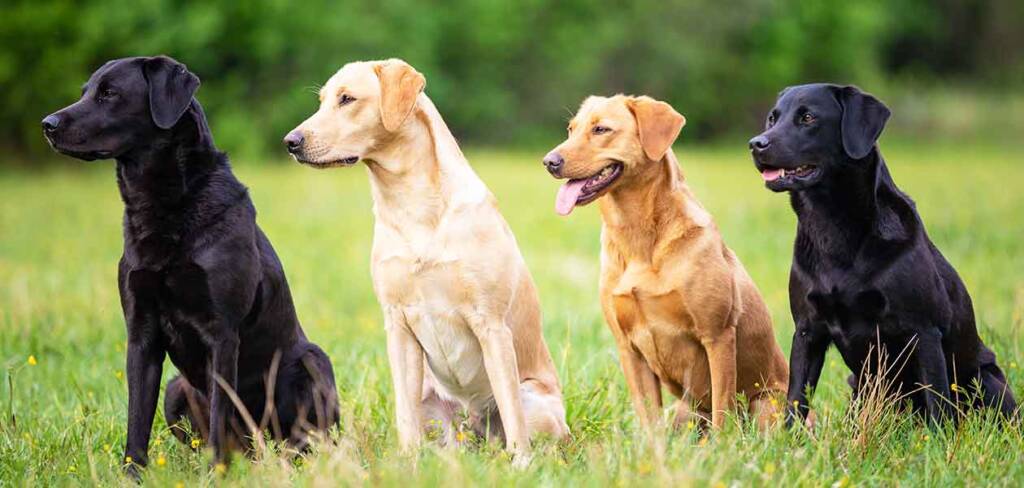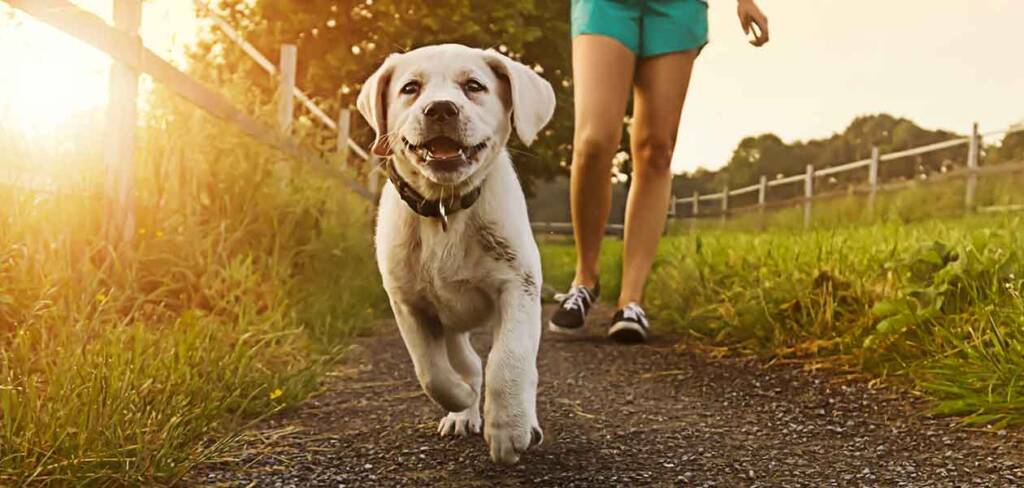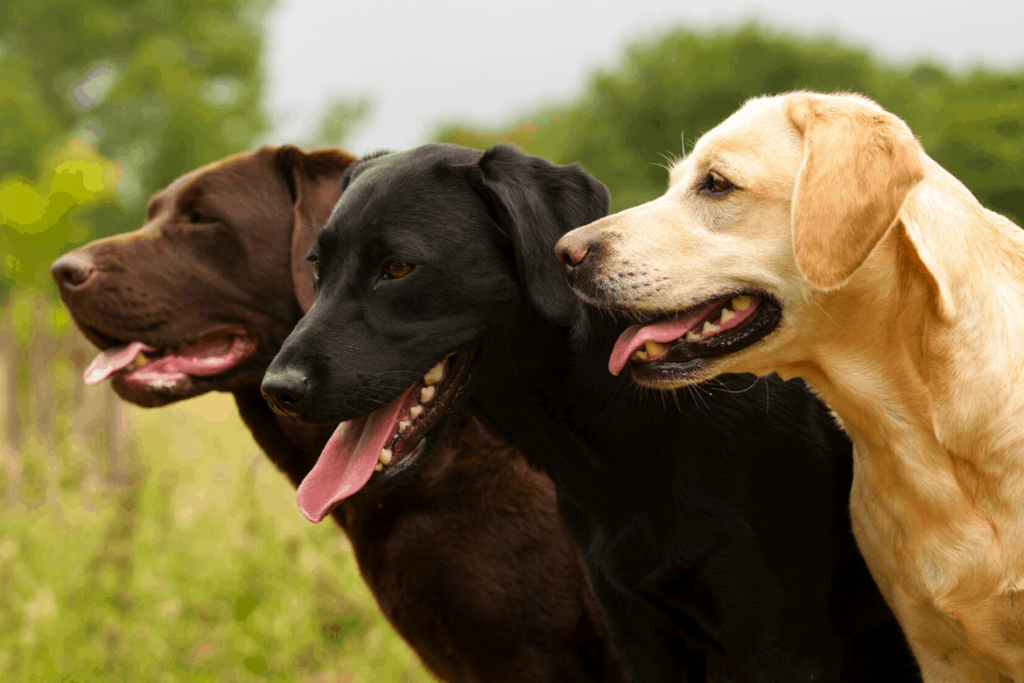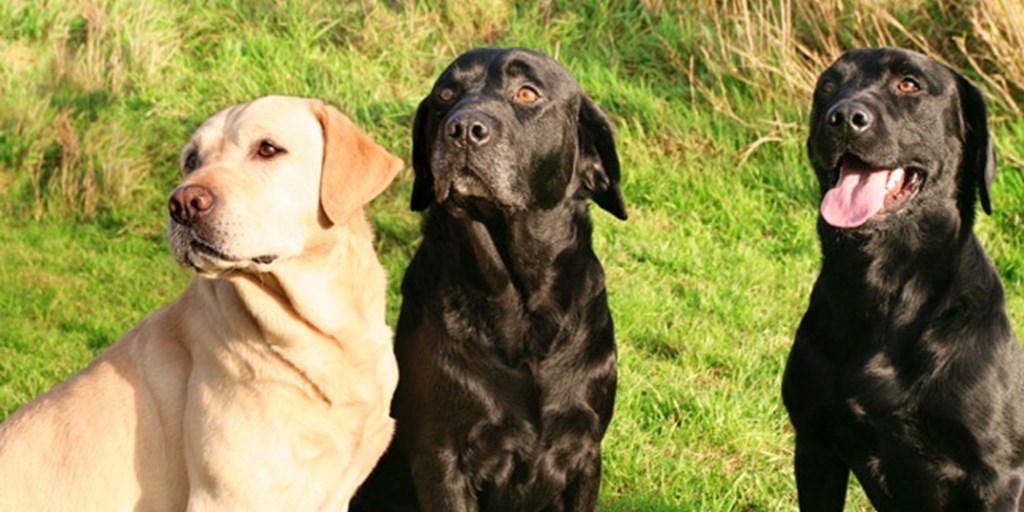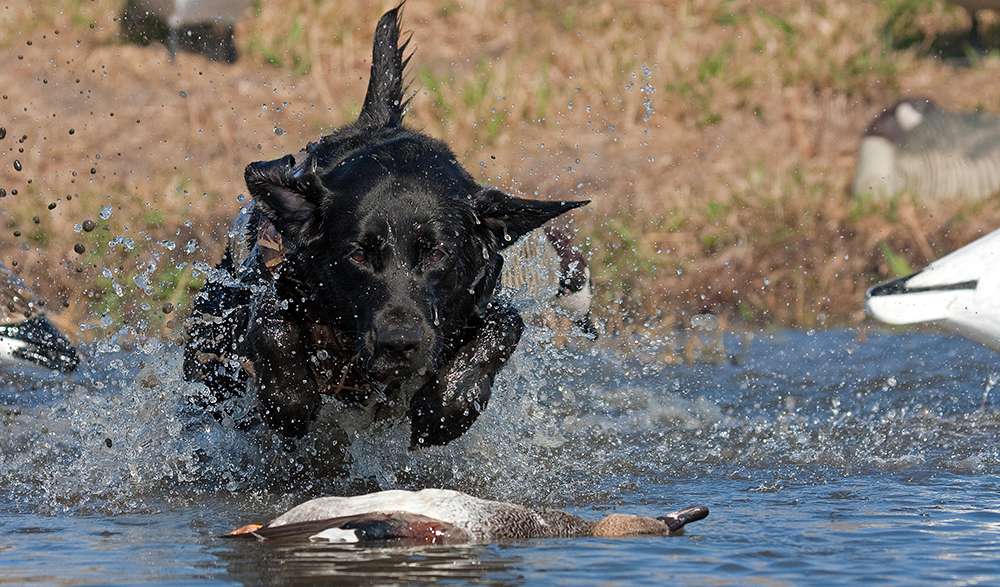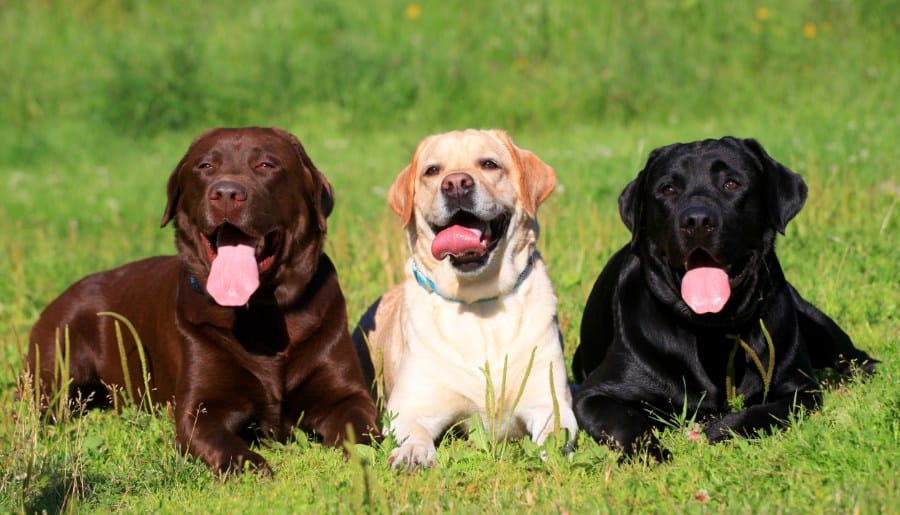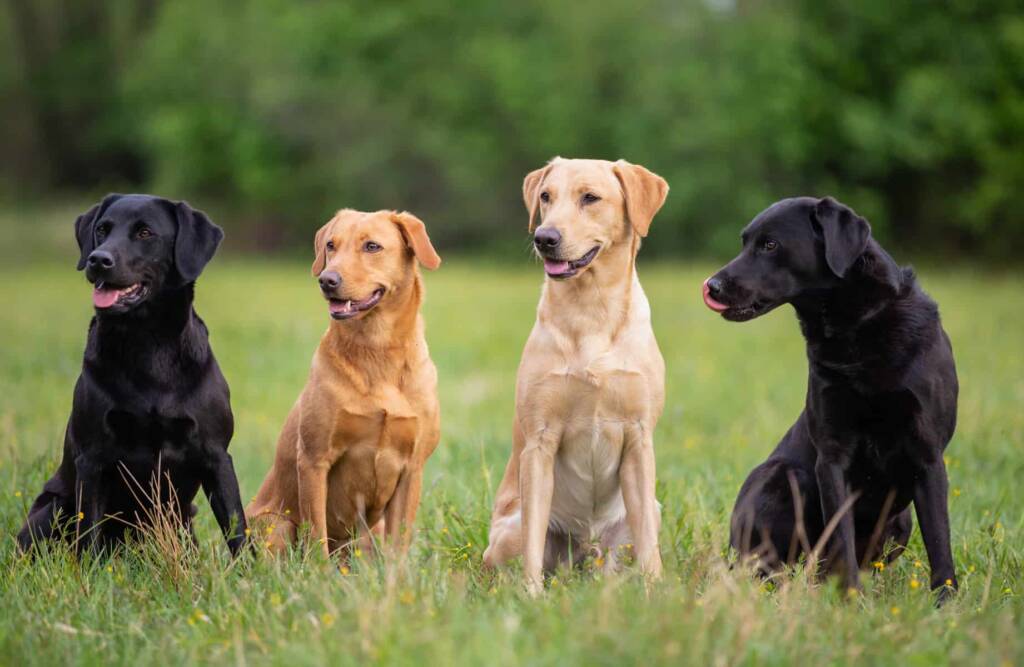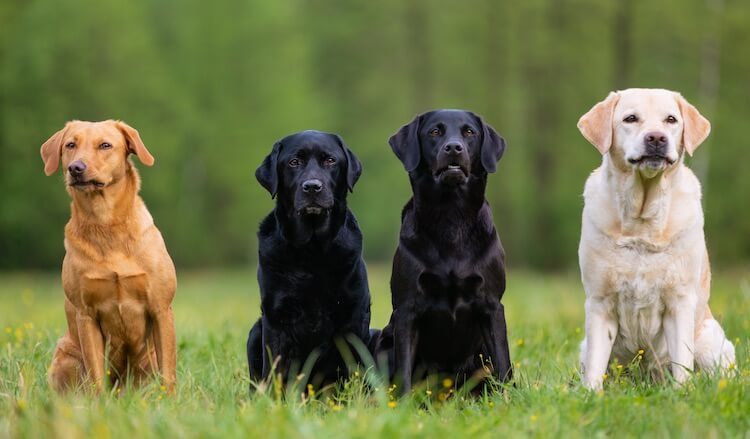Let’s find out what makes a working Labrador Retriever, and how you can enjoy training your dog to fulfill his natural potential!
He may not be aware of it yet, but your Labrador Retriever has a set of instincts that you can have a lot of fun with. Today’s topic is Labrador as a hunting or shooting companion, and we’ll look at how to use those ‘retriever’ instincts to keep your dog healthy and thrilled, as well as relieve boredom.
There are a variety of hundreds of purebred dog breeds registered by the AKC (in the United States) and KC (in the United Kingdom), which are classified into distinct categories. Each group consists of dogs that have certain similarities in common. In many cases, each category is connected by a similar goal, the aim for which the dogs within it were created.
The Labradors that you know and love are descended from hunting partners, as they were originally bred to hunt wild animals intended for human consumption.
The gun dog group of dogs
Labradors, by definition, are ‘retrievers.’ He belongs to the large and well-known retriever sub-group known as retrievers. The Flat-coated retriever, Golden Retriever, and Chesapeake Bay Retriever are all members of this group.
The golden retriever is a gun dog, as are many other retriever breeds. Many of these dogs have a similar history and background, with numerous genetic links and interbreeding if you go far enough back in time. Over the last one hundred years or so, retrievers have been divided into distinct breeds, each with its own set of characteristics. The Labrador is currently the most popular breed in the United States.
Why retrievers are the world’s favorite dogs
Labradors are the most popular of the retriever breeds both as family pets and service dogs, as well as hunting partners for individuals who shoot a game and want a dog to retrieve it for them.
The Golden Retriever is one of the most popular and numerous dog breeds, especially in the United States. These two breeds dominate the pet dog market because of their ancestry and purpose. And in doing so, they have been bred to work with and cooperate with humans.
What was the original role of the working retriever?
The first guns, which revolutionized hunting by allowing people to shoot animals from a distance, were cumbersome muzzleloaders and the dogs that worked them were pointers and setters. These dogs range over wide areas and hunt for particular birds, pointing them out to their human companions who can then get within shooting distance of the bird when flushed.
With the advent of faster breech-loading weapons and the arrival of driven game shooting in the UK, a new type of dog was needed. Shots could now be fired in quick succession, and with a pair of breech-loading guns and a loader, many birds at once could be killed. A retriever that can remain calm while under such tension and recover bird after bird without disturbing the game on adjacent strips of land was required. And so, to fulfill this specialized function, retriever breeds were developed and bred.
Many retrievers were never required to hunt up and flush unshot game in their native countries, owing to a lack of wildfowl populations. Except for a few areas of open moorland, this was gradually taken over by the dual-purpose spaniel.
What do working Labradors do today?
The primary goal of the working Labrador Retriever is for the dog to return the shot game to his master. Fallen game is usually difficult to locate and collect, which is why retrievers are so important in this operation. Not only to ensure that the hunter may eat what he kills but also to assure that any wounded animal is killed as swiftly and humanely as possible.
The job of the working Labrador today varies somewhat throughout the world. We’ll look at how retrievers are utilized as hunting companions in the United States and how they’re utilized in the United Kingdom to see if there are any significant distinctions.
Working Labrador Retrievers in the UK
In the UK, Labradors are still used in the same capacity as they were a century ago on driven game shoots up and down the nation. Game birds are driven to flush and fly past the weapons by a group of beaters, frequently accompanied by Spaniels who aid in flushing the birds.
Men and women standing on a predesigned site marked by a peg or post in the ground shoot the birds. The shooters are known as “guns,” while the dogs that sit next to them waiting to be instructed to retrieve are called “peg dogs.”
The majority of the game shot on a driven shoot is gathered by a team of ‘pickers-up.’ These are individuals who raise and train their dogs, work them on shoots, and compete with them. retrievers are commonly among the picked-up dogs, although other breeds have been observed doing so as well.
Other types of UK shooting
Shooting on a preserve, which was formerly the domain of the wealthy and titled gentry, is now both fashionable and affordable. And it’s not difficult to get your hands on a day’s pheasant hunting in Scotland for a reasonable price.
Rough shooting
A more informal type of shooting known as “rough shooting” is more popular in the UK. This can include just one individual and their dog or a group of friends and a whole team of dogs. The dogs will chase ahead, while the guns walk behind, and many Labradors are excellent rough-shooting dogs.
Wildfowling
Finally, there’s the specialized sport of wildfowling, in which retrievers shine and are necessary.
Because of the many islands and waterways, England has a significant amount of seacoast relative to the interior. There is no cost for most of the beach for those who wish to hunt geese and ducks.
Retrieving over long distances in difficult circumstances, such as on muddy foreshores at night or frequently swimming long distances in cold water, is best handled by a retriever, and Labradors are the most popular choice amongst many wildfowlers in the UK.
Working retrievers in the USA
In the United States, rough shooting is known as “upland” shooting, and it’s referred to as hunting. (In the UK, hunting with hounds is usually called hunting.) Hunters are frequently referred to rather than “guns.” However, much of what we do and expect of our dogs in both countries is similar.
In England, the countryside that we see today, with tiny copses nestling into slopes, was primarily built to offer excellent driven game shooting. In America, however, hunting has developed in ways that are quite different.
Retriever is still a job description, but it may have more emphasis on retrieving from water in big lakes and rivers or flooded regions where goose and duck hunting is popular. In addition to being outstanding upland and waterfowl hunters, some American working Labradors point, in the manner of early setters and pointers that our ancestors relied on to find game.
In open country, dogs are less numerous than on an English shooting estate or farm, and pointers and setters are still popular. Despite this, the Labrador has grown to dominate the hunting scene in America just as it does in the UK.
Could my Labrador be a working retriever?
If you enjoy the strength and bravery of these amazing hunting companions, and the prospect of hunting your dinner and having your dog fetch it for your appeals, you might be asking if your dog could ever be a working retriever.
Labradors are the most popular retrieving dogs, and they may arguably be considered the greatest retriever in the world. So much effort has gone into developing this great retriever that many show-bred labradors retain some sort of retrieving ‘gumption,’ just waiting to get out. Your chances of raising your Lab to a high level, as well as having him or her accepted into the world of working gundogs, will be greater if your dog is from working stock.
Field and Bench Labradors
You may be familiar with the fact that Labradors have been divided into two separate strains.
These are known as American (field) and English (bench) laboratories in the United States.
Our original Labradors were developed for flawless performance in the shooting arena. For their game-finding capacity (so you can take home what you shoot), for their trainability (so they bring your dinner back and hand it to you), and for their soft mouth (making it fit for the table). They also needed to be robust, athletic, waterproof dogs that could jump gates and fences, swim against a strong current, and operate in all types of weather.
We began breeding dogs for beauty contests, or “dog shows,” and over the years a heavier, less agile, shorter-legged, Labrador has emerged. In America, where they are known as American Labs, and in the UK where they are known as Working (or Field) Labs, the working strains of Labrador are flourishing. English in the United States and Show Lab in the United Kingdom describe labs bred for exhibitors’ benches.
Your chance of success at retriever training
The group to which your own Labrador belongs will have a big impact on how well you can train him to work effectively in the shooting field. The majority of today’s working Labrador Retrievers are bred in the field. In the United States and the United Kingdom, virtually all Labrador Retrievers that participate successfully in field trials are bred in the field.
You can still train your Labrador as a gun dog
However, you can’t teach your English Show Lab as a hunting buddy. You may find it more difficult than if your dog comes from working lines, though this isn’t to suggest that you can’t do it.A Field Trial is not recommended for dogs that have previously won a Field Trial. However, it does imply you are less likely to bring home any prizes from a Field Trial. But let’s be honest: the vast majority of us just want a nice hunting partner, not a Field Trial Champion. So let’s look at what it takes to teach your dog to retrieve anything you or someone else has shot.
How does gun dog training differ from pet dog training
Obedience is the basis of all gun dog training. People have told me that their very mischievous Labrador would have made a fantastic hunting dog. But obedience is far more essential in a hunting companion than it is in a pet dog. A truly wild dog that has spent the previous two years chasing everything from behind might not be an excellent candidate for gun dog training.
The most basic commands such as SIT, HEEL, and COME are first and thoroughly tested. The fun begins next when the retriever is taught to ‘handle’ or follow instructions given by his handler hundreds of yards away. Those commands are delivered via whistle and hand signals in both the United States and the United Kingdom. However, in the United States, this method of instruction has developed along distinct paths from that employed in Great Britain.
The primary reason for the diversity in retriever training strategies is due to the differences between our regions’ Field Trials. So let’s start with that.
Field trials in the UK
In the United Kingdom, field trials have been largely unchanged for a century. They continue to follow the driven pheasant shooting format that our ancestors enjoyed, and UK Field Trials are held in live-shooting conditions on a true shooting day.
According to the official rules, each dog will have a variety of retrieves to grab. Some will be dead-sighted birds, while others will be blind retrieves. There will be no two field trial retrieves that are alike. The judges pay close attention to excellent game-finding skills, a soft mouth, and good manners. Any form of noise is a putting down. Dogs must be faultlessly quiet and obedient.
Field trials in the USA
The scarcity of driven pheasant shots in the United States has resulted in Field Trials taking on distinct forms. Each trial comprises several pre-planned retrieves, and each dog must complete the same tasks under identical circumstances. This implies that if dog A must run two hundred and fifty yards through rough terrain and across a lake midway, then dog B must do the same.
In many ways, this is a more equitable evaluation since all the dogs have had to complete the same activity; in other ways, it is a less natural assessment of what happens under real-world shooting circumstances.
The impact of ’set-up’ retriever assessments
One of the side effects of this more formulaic type of evaluation is that retrieves have gotten lengthier and more demanding. Handling has become more essential than game-finding, and water – which brings new difficulties – has grown to be a much greater component of the competition. This change has had a significant influence on training methods. Let’s take a look at it.
Retriever training in the USA
In a long-distance retrieving competition where maintaining a straight line is critical if a dog is to be handled accurately onto a bird more than three hundred yards away, deviating from that straight line has become unacceptably dangerous. And to prevent dogs from doing so, it’s necessary to employ a technique of correcting dogs at long distances. The e-collar is, of course, the subject of considerable debate.
Preparation for e-collar training
However, if you trained your dog to enjoy the use of an E-collar and you used that method in these situations before, the consequences would be quite different. When the dog is heading out to pick up a retrieve, he may run off in a new direction or come back to his handler for comfort.
A dog trained to deal with an E-collar at a distance must be prepared by working him close up to regulate his reaction to the shock. As a result, one of the fundamentals of US retriever training is teaching a dog how to react when he feels pain. And what he is taught is that if he feels pain, he should haul on towards the retrieve.
This begins with a process known as Force Fetch, in which discomfort is applied to the dog’s toe or ear and removed as soon as he grasps a retrieving dummy. The dog learns to switch off the pain by grabbing the retrieve in essence.
Although the collar is an essential element of training for American retrievers, once trained, a dog will not be shocked regularly, and dogs may not wear collars while competing in a Field Trial. Many drills and training activities have been developed to assist handlers working on various elements of handling due to the significance of handling and straight lines in US trials.
Retriever training in the UK
In the UK, natural game-finding is highly appreciated, and retrieves are frequently over shorter distances, thus Field Trial dogs are not required to be as accurate with each retrieval as they are in the US. The dog is expected to exhibit his capacity for self-discovery.
Retrieves have lengthened in the UK (although not to the same extent as in the United States), and there is a greater emphasis on handling than there should be, according to some trainers. However, few UK instructors use retrieving training and activities to the degree that US instructors do.
There’s also a second side to this. All dogs in the United Kingdom are required to naturally retrieve. Traditional retriever instructors do not usually teach any type of forced hold and force fetch training is not used here. In reality, it would be illegal in England to intentionally inflict pain on a dog for any reason, and there is considerable momentum toward prohibiting e-collars permanently.
Retrieving a naturally driven dog means that retrieving exercises, or any activity that might cause a dog to avoid retrieving for pleasure, is frequently avoided. Except by those who teach a ‘trained retrieve’ distinctly. Let’s have a look at it further.
Positive Gundog Training
There is still a lot of traditional correction-based “discipline” employed on British gun dogs, even though force fetch isn’t utilized in gun dog training in the UK. However, in the United Kingdom, a small group of gundog trainers has taken things one step further away from the North American approach and begun teaching their dogs without using Aversives or Punishment.
The positive reinforcement training movement now dominates most dog sports and services, but it is only gradually making inroads into the gun dog sector in Britain. The term force-free refers to a training method that uses no harsh corrections or physical punishment. It’s also known as positive-only, nonaversive free, or good behaviorists.
One of the advantages of positive reinforcement training is that it allows retrievers without a good natural retrieve, owing to a missing link in the retrieval chain. However, another less well-known benefit is that it allows UK gun dog trainers to utilize US retrieving exercises since dogs have been taught to retrieve for a reward rather than for their pleasure.
How are working retrievers assessed?
The ultimate test for a working gun dog is the field trial, but it is not the only way to measure a retriever’s performance. There are various sorts of evaluations that are seen as less difficult and more suited for amateurs or hobbyists.
Hunt tests in the USA
In the United States, there is a Hunt Test system run by each of the two Kennel Clubs: the American Kennel Club and the United Kennel Club. These are non-competitive tests for gun dogs that vary from the very basic ‘Junior Hunter’ level to the highly difficult top-level hunt test titles such as ‘Grand Hunting Retriever Champion.’
USK requires a minimum of three passes at three different levels before you can achieve the title Working Border Collie or working Border Collie Utility. You may earn titles for your dog in both US and UK Kennel Clubs. The majority of those tests are offered by the American Kennel Club (AKC). To win a hunt test title for your dog, you must obtain a collection of ribbons at each level, and these are given to dogs that pass the test or assessment successfully.
Field Tests and Working Tests in the UK
The Kennel Club in the United Kingdom has Gundog Working Tests, which are similar to our Field Trials. These tests, unlike the American Hunt Test system, are competitive. GWT’s are frequently (but not always) conducted on dummies rather than games and may be suitable for amateur non-shooting gun dog owners. In terms of competitiveness, however, only the finest dogs on a day win an award, even if their performance was up to par.
The Gundog Club uses a system for non-competitive testing that is based on the USA hunt test system, and it is administered by The Gundog Club.
Getting involved in retriever training and gun dog work
There is still an immense delight to be had from becoming a retriever trainer with your Lab whether or not you are a hunter. It will allow you to work with your dog outside and channel his energy and instincts into a rewarding career, as well as watch him reach his full potential. If you don’t want to handle dead animals, much of the training may be done using retrieving dummies.
Working and training your dog in the USA
The North American Hunting Retriever Association is a good place to begin in the United States. To obtain the assistance and support you need, you’ll almost certainly have to join your local club. The NAHRA website contains contact information for your local clubs.
There are a few cross-over and positive reinforcement trainers in the United States – a great place to meet them is on the Positive Gundogs Facebook group.
Working and training your dog in the UK
The shooting scene in the United Kingdom isn’t always welcoming to newcomers. One of the greatest ways to break into it is to volunteer to assist on a film during the summer or spend some time with a professional gun dog trainer. The Gundog Club is an excellent place to start if you’re a complete novice. It offers a graded training curriculum that takes novices through each of the gundog training’s stages in an easy manner, and a list of Accredited Trainers for those who want some coaching.
If you’re a first-time dog owner, it’s important to remember that your puppy will grow up. Many things can go wrong over time while training a new pup. If you’ve already reached the fourth grade, there’s no reason why you shouldn’t participate in some shooting activities. You can learn more about schooling your dog and getting into shooting on the Totally Gundogs website.
Before you begin gun dog training
The adage, “the greatest way to destroy a good dog is to take it shooting,” has some truth to it. A shoot day is a highly thrilling event for a dog. Before you participate in such an occasion, make sure your dog is accustomed to gunfire, has some basic training, and that he or she is ‘steady’ (will not chase)to the game (won’t run away).
In any social group, some certain standards and practices distinguish it from others. On a shoot day in the UK, you must dress ‘dignifiedly.’ Bright colors are frowned upon, and most beaters and pickers wear a drab hue of green or khaki.
In the United States, hunters adopt a different strategy and usually wear bright orange to assist other hunters to spot them. If you want to get involved in your local shooting community, the key is to be helpful and eager to learn the rules and customs of others.
Summary
The Labrador Retriever’s primary function is to collect shot animals and birds, which he then transports gently and securely back to his owner or lady. Retrievers are trained using plastic retrievable dummies, with the majority of Labradors finding retriever training entertaining even if they cannot win a competition. Getting involved in retriever training as well as exercising your dog is a fantastic outdoor pastime that will keep you and your four-legged companion healthy and happy.
